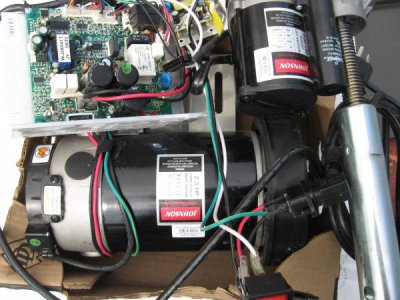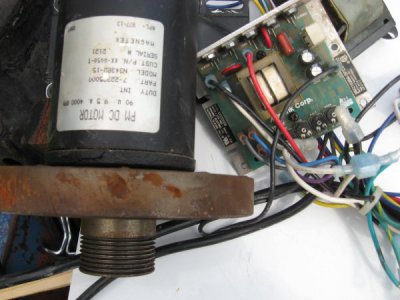B
British Steel
Forum Guest
Register Today
From here, best place to go is where you got the motor and controller, see whether they still have the control head with the keypad...
That's a serial connection, so (unless anyone knows better) the board's expecting codes, not simple voltages - I use a similar board from a Reebok treadmill, it too uses a serial link so I've had to keep (for now) the display and pushbuttons to use it as a DC motor test rig
Otherwise - the board's a decorative ornament, nothing more, you may be best getting a KB or similar motor controller to replace it?
Dave H. (the other one)
That's a serial connection, so (unless anyone knows better) the board's expecting codes, not simple voltages - I use a similar board from a Reebok treadmill, it too uses a serial link so I've had to keep (for now) the display and pushbuttons to use it as a DC motor test rig
Otherwise - the board's a decorative ornament, nothing more, you may be best getting a KB or similar motor controller to replace it?
Dave H. (the other one)


